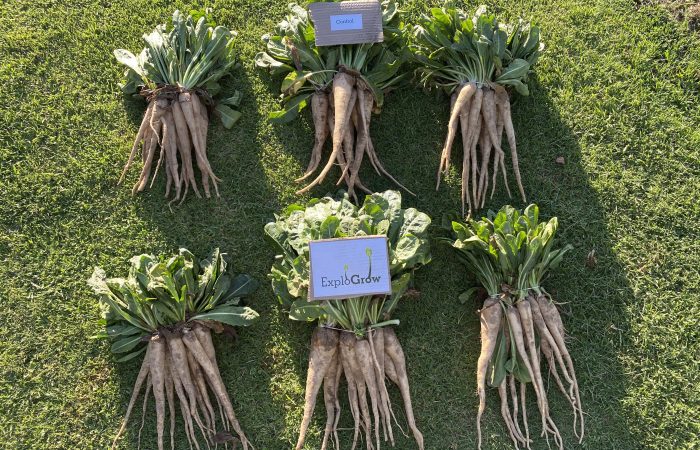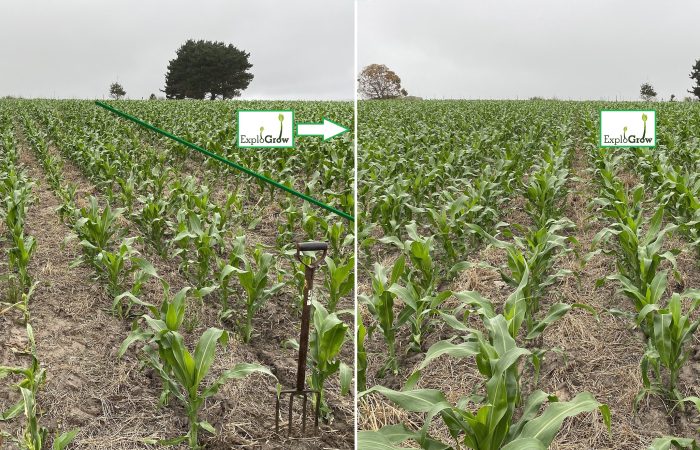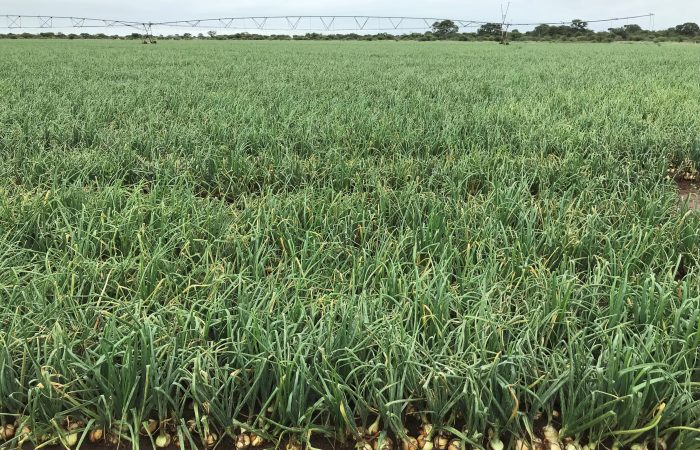Growing more Sugarcane with bio organic fertilizer whilst reducing Chemical Nitrogen fertilizer by 44%
Photo by Jonathan Bucke
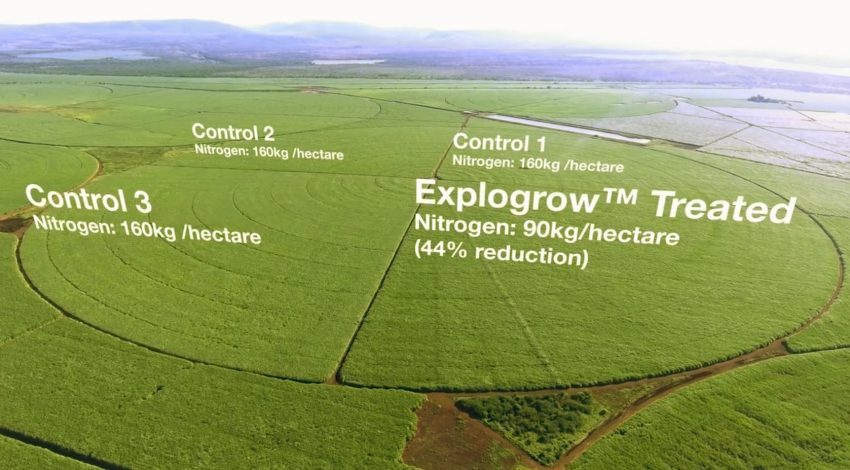
Land 701: Traditional sugarcane farming (Control)
Chemical fertilizer: ( N-P-K 160-0-0 )
- 86 tons/ha
Land 702: ExploGrow™ organic bio-fertiliser with a polymicrobial blend of soil beneficial microbes
Chemical fertilizer: ( N-P-K reduced -44% to 90-0-0 )
- 114 tons/ha (+32.5% increase)
- pre-harvest Brix: +19% increase
- beneficial soil microbial life: rejuvenated
"The unique microbial composition places ExploGrow™ in a league all of its own". Dr Malherbe, BSc; BSc Hons.; MSc (Mikrobiologie); Pr.Sci.Nat. (Landbouwetenskap); PhD (Agronomie)
4 months after first ExploGrow™ biofertilizer application
- The farm: the largest private Sugarcane farm in the world irrigates 4,000 of the 24,800 hectares under cane.
- Planted: December 2016
- Nitrogen application:
Control: 160 kg per hectare applied
ExploGrow™ applied together with 90 kg per hectare (saving 44% N fertilizer)
- First ExploGrow™ application: 10 December 2016
- Root system: more than double after just 4 months. Further details below.
- Harvest: November 2017
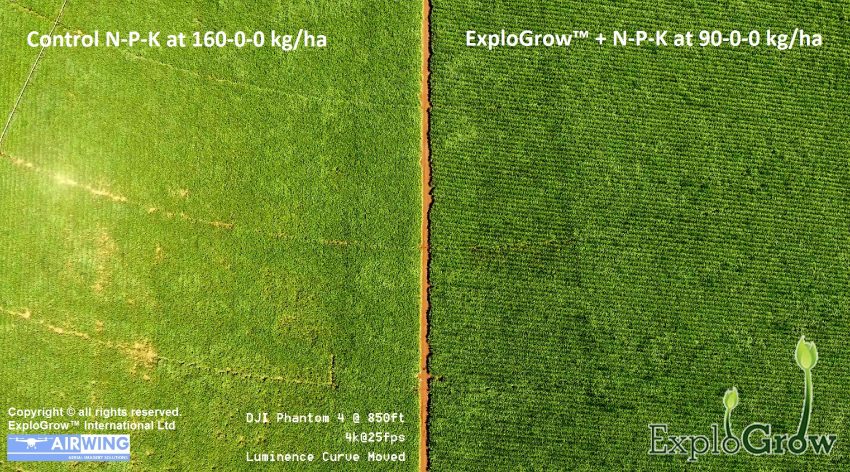
Arial photo (850 ft) of the 100 hectare test area. Control on the left, ExploGrow™ treated land on the right.
November 2017 harvest results:
- Increased leaf mass and photosynthesis (statistical data: details below)
- Increased soil life: 80 times more bacteria; 50 times more fungi (data below)
- The ExploGrow™ area produced 114 tons / hectare = an increase of 28 tons / hectare (+32.56%)
- Brix increased by +18.9% (statistical data: details below)
[Note that the control area (with an additional 70kg/ha chemical Nitrogen applied), produced 86 tons/ha]
"ExploGrow™ represents more than increased yield, crop quality and rejuvenated soil. True sustainable agriculture requires real and safe solutions enabling farmers to cut down on chemical fertilizers, poisons, and using less water. We must, before it is too late, give serious attention to the health and sustainability of our soils. We must now embrace more responsible new farming methods."Mnr Dreyer Senekal, Senekal Boerdery
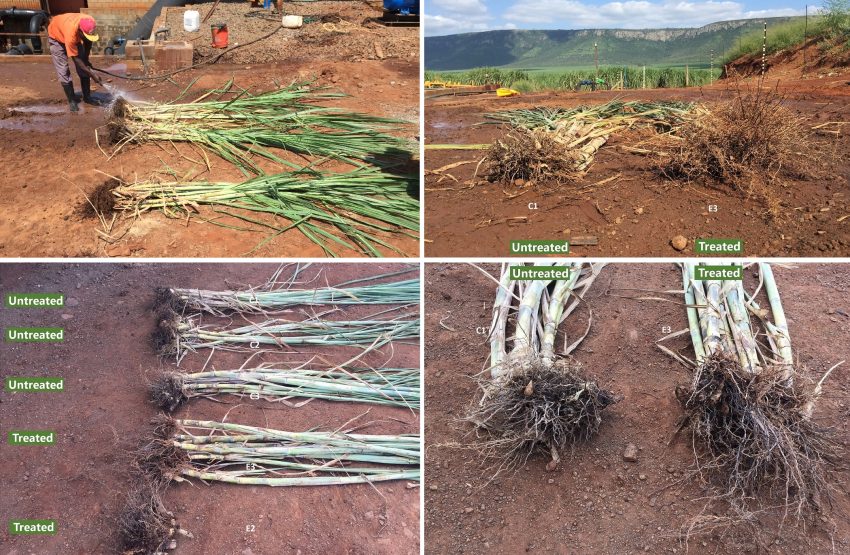
Root development 4 months after first application of our bio-fertilizer
Five clusters of Sugarcane were take from profile holes.
The root systems treated with ExploGrow™:
- were more than double in size
- penetrating the clay soil more than twice the depth
The more than doubling of the root system enhances the plant's ability to absorb nutrients, hence reducing chemical fertilizer requirements, reducing water needs (around -20%) and makes the plant more resistant to extreme heat, cold/frost (through absorption of more minerals) and typically increases the yield and the Brix dramatically.
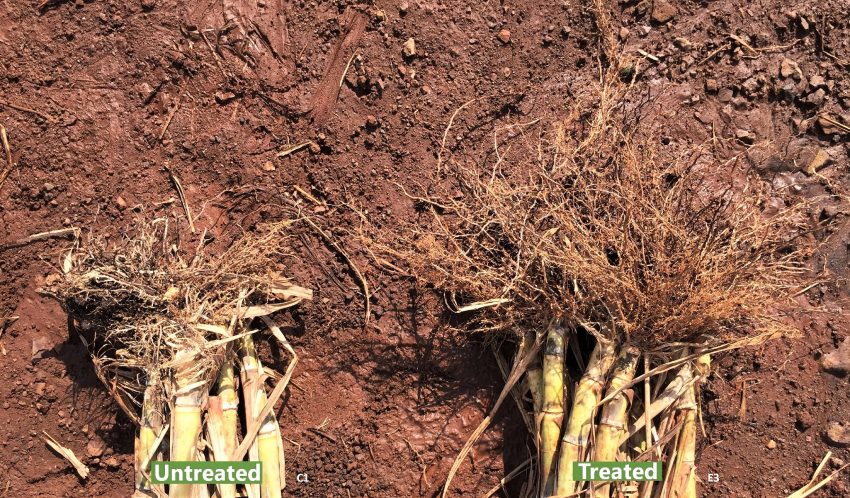
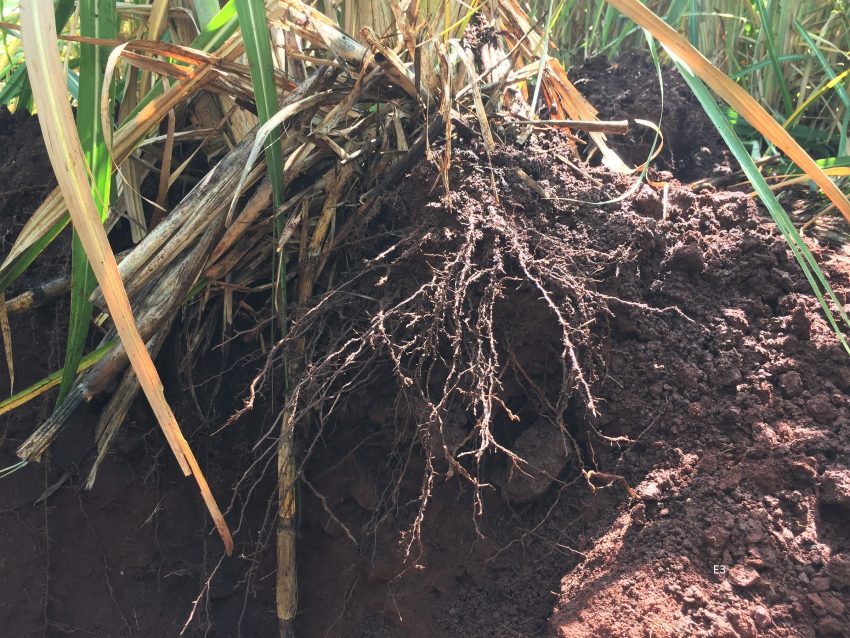
Increased biological activity: visibly better soil
After only 4 months, soil conditions are already visibly improved compared with the control.
"This is due to the increased biological activity by the 17 microbes in ExploGrow™ and the consequent much larger root systems" Mark Young, BSc.
Soil microbial analysis before and after
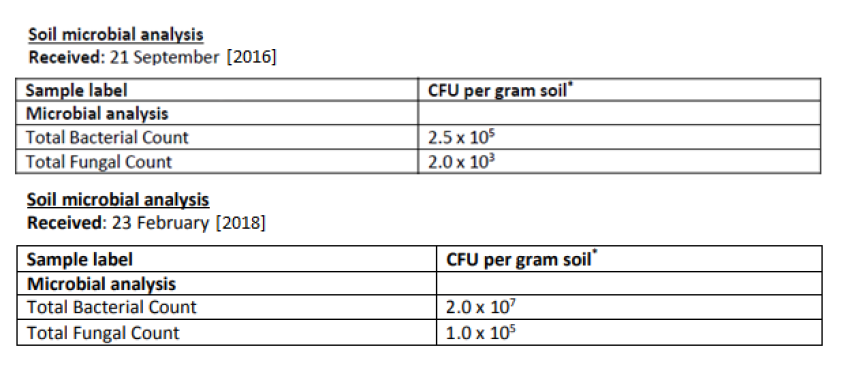
Increased soil life:
[Note: Microbial soil analysis was conducted at Rhodes University by Professor Joanna Dames, Department Biochemistry, Microbiology and Biotechnology]
Replicate soil samples were serially diluted, plated onto appropriate media, incubated and assessed for colony forming units (CFU).
Note: The analysis only provides a microbial count per gram soil, no identifications of the microorganisms have been made apart from separation into broad bacterial and fungal categories.
Before: 21 September 2016
- Total Bacterial Count: 0.25 million
- Total Fungal Count: 0.002 million
After: 23 February 2018
- Total Bacterial Count: 20 million (80 times more bacteria)
- Total Fungal Count: 0.1 million (50 times more fungi)
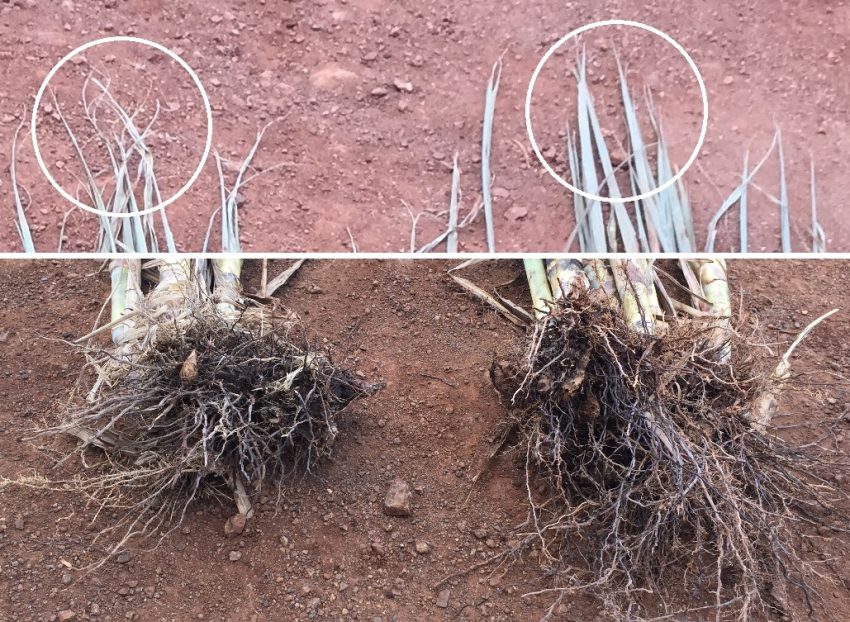
Enhanced drought stress tolerance: observation
After the sample Sugarcane plants were removed from the soil, the ExploGrow™ treated leaves retained moisture for a longer period (4 hours+) versus the wilting leaves of the untreated Sugarcane.
"Drought is one of the major constraints on agricultural productivity worldwide and is likely to further increase... Plant growth promoting rhizobacteria (PGPR)* could play a significant role in alleviation of drought stress in plants. These beneficial microorganisms colonize the rhizosphere/endo-rhizosphere of plants and impart drought tolerance". **
* [Note that ExploGrow™ contains several plant growth promoting rhizobacteria (RGPR)]
** ["Enhancement of drought stress tolerance in crops by plant growth promoting rhizobacteria".
sciencedirect.com/science/article/pii/S0944501315300380 24 August 2015, by Sai Shiva Krishna Prasad Vurukonda...].
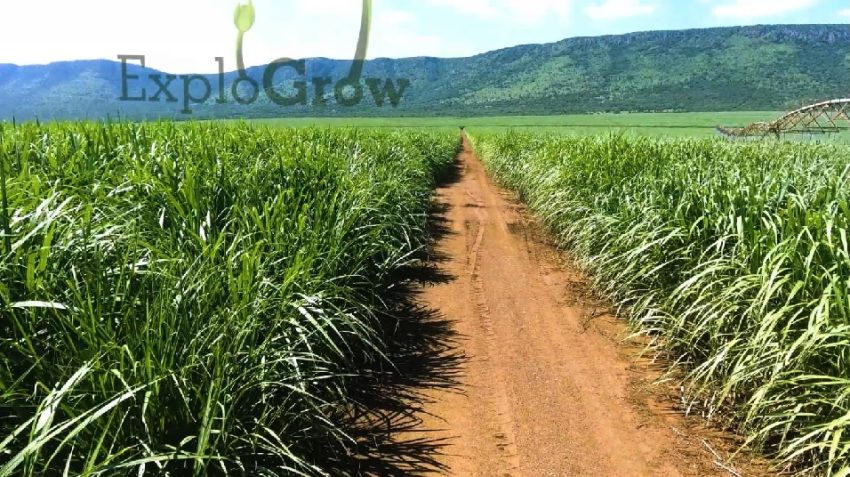
Increased leaf mass
The treated Sugarcane has more leaves that are both longer and greener. That results in more photosynthesis (also confirmed by chlorophyll fluorescence measurements below) and more growth over the remainder of the growth cycle till harvest.
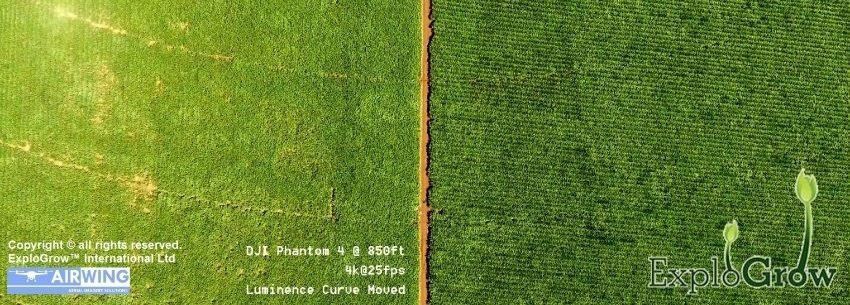
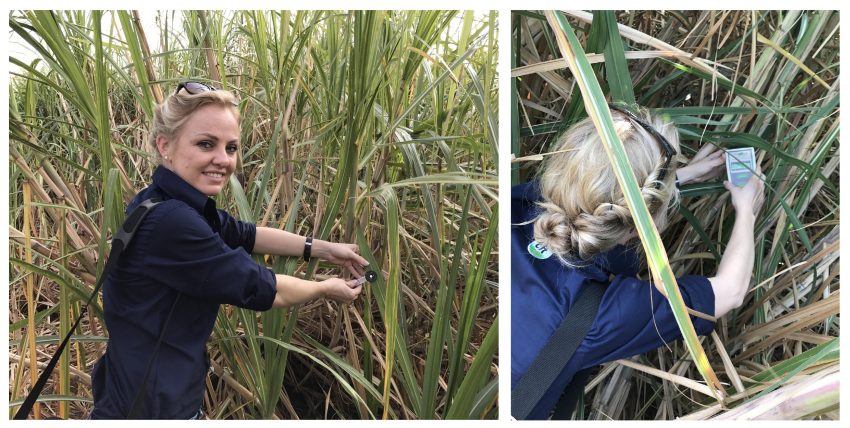
Improved leaf photosynthesis
Chlorophyll fluorescence was measured by Marguerite Wescott, MSc, PhD Candidate, Plant Science (pictured) using the Pocket PEA from Hansatech Instruments.
The average Chlorophyll fluorescence in the ExploGrow™ 6 liter/ha came out at +46.1% increase, as compared with the average of the Controls. The +46.1% increase in Chlorophyll fluorescence correlates with the +32.56% increase in yield. The Chlorophyll fluorescence is an indicator of the improved leaf photosynthesis taking place in the plant, due to the enhanced activity of the beneficial microbes.
More data available upon request.
Sugar content (Brix) increased by +18.9%
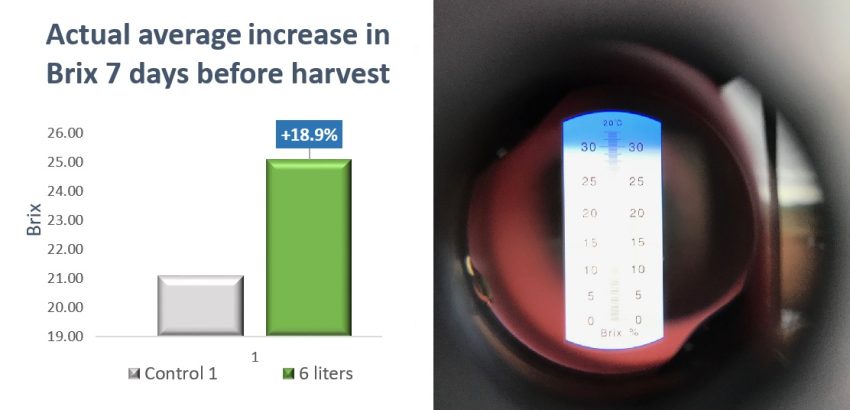
[Note: The around "30" reading of the refractometer pictured above, shows Brix measuring well above the average Brix content]
Actual Brix measured 7 days before harvest
ExploGrow™: average Brix: 25.08 (from 24 internode samples)
Control: average Brix: 21.08 (from 12 internode samples)
Actual Brix increase: 4.0 = +18.9% increase
More data available upon request.
Year on year yield comparisons
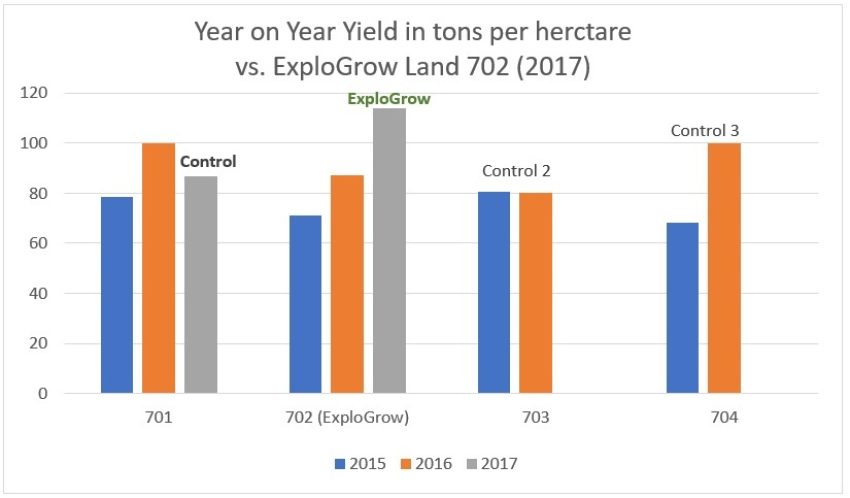
[Note: Graph above: 2015 -2017 year on year yield comparisons from the 4 quarters (land 701; 702*; 703 & 704)
in the 100 ha pivot trial area.] *Land 702 received ExploGrow in 2017.
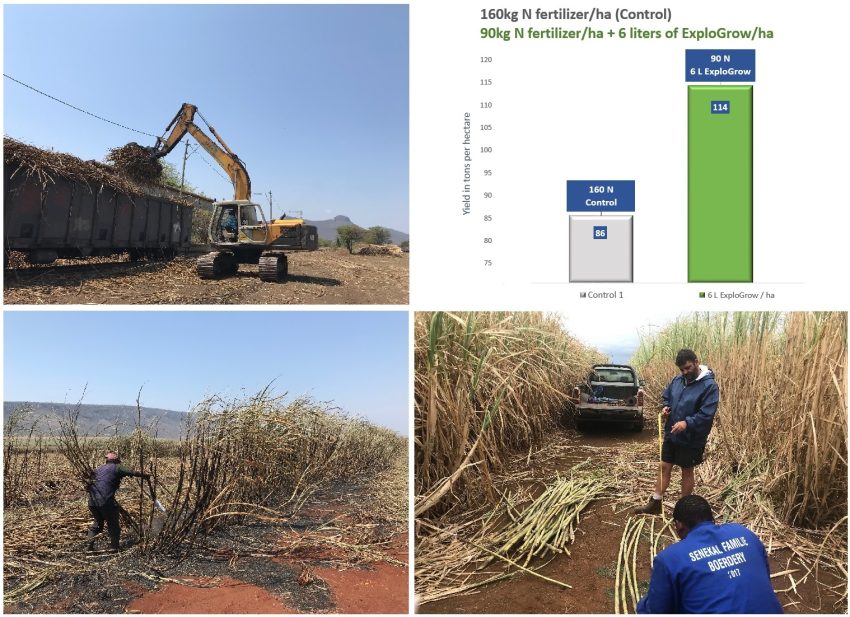
At harvest: increase in Sugarcane yield (tons per hectare)
- The control area with 160 kg N/ha, produced 86 tons/ha
- The area treated with only 1 liter/ha ExploGrow™ and 90 kg N/ha produced 54 tons/ha
- The area treated with only 3 liters/ha ExploGrow™ and 90 kg N/ha produced 62 tons/ha
- The ExploGrow™ area with 6 liters/ha produced 114 tons/ha
The main ExploGrow™ area (at 6 liters/ha) produced 114 tons / hectare = an increase of 28 tons / hectare (+32.56% increase)
"The doubling of the root system and the huge amount of Nitrogen activity is just unbelievable!”... "ExploGrow™ is truly a game changer"Mnr Dreyer Senekal – die befaamde suikerrietleierboer - van Senekal Familie Boerdery
Acknowledgments:
- We thank Mr. Dreyer Senekal, Mr. Danie Willemse and the farming team at Senekal Familie Boerdery for their assistance in conducting the field trial
- Jonathan Bucke (Air Wing) for drone videography and aerial photos
- Dr. Joanna Dames for microbial analyses (Rhodes University)
- Marguerite Wescott, MSc, PhD Candidate, Plant Science (University Free State, South Africa and Carbon Fertilizer Technologies)
- ExploGrow™ team members and consultants not yet mentioned, you know who you are :) thank you!
Funding was provided by Senekal Familie Boerdery, ExploGrow™, Carbon Fertilizer Technologies (Carbotech® Liquid Carbon) and Afran Ammonia (Keystone Calcium).
More statistical data available from around 1,500 canes:
Indicating increased length of cane, internode counts, remarkable thermal heat mapping observations etc.
Additional research paper:

